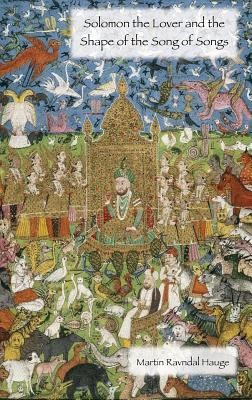
- We will send in 10–14 business days.
- Author: Martin Ravndal Hauge
- Publisher: Sheffield Phoenix Press Ltd
- Year: 2015
- Pages: 198
- ISBN-10: 1909697958
- ISBN-13: 9781909697959
- Format: 15.6 x 23.4 x 1.3 cm, hardcover
- Language: English
- SAVE -10% with code: EXTRA
Solomon the Lover and the Shape of the Song of Songs (e-book) (used book) | bookbook.eu
Reviews
Description
Reading the Song of Songs perpetually raises the question, What is this love that has been sung about so evocatively to ever new generations? The exuberance of the poetry and the remarkable history of its reception make the understanding of what the poetry is all about the more urgent for the conscientious reader. The shape of the Song and what this shape reveals of the poet's concerns are central for this study. Hauge's analysis discloses that a special arrangement of formally independent units, signalled by effects of repetition, is typical of its composition. The strophes are set out in a fivefold pattern containing three types of passage: narrative elements, addresses to the daughters of Jerusalem, and dialogues between the lovers. The tension of the opening scenes dedicated to Solomon and his women, contrasted with a final scene where the king is the humble supplicant, reflects an underlying story of how Solomon the lover of many women was transformed into a lover of the One. The story is dedicated to the power of love, its character as an overwhelming force being even accented by implications of shame. Motifs of absence and separation suggest longing as the essence of love, the final image of the lover as the hart upon the fragrant mountains adding a tinge of sadness to the impression. Themes from the Solomon tradition are important for the narrative strand. The formal shape and the cast of actors are deeply influenced by Proverbs 1-7, not least when the poet plays havoc with venerable aspects of the wisdom tradition.
EXTRA 10 % discount with code: EXTRA
The promotion ends in 20d.23:29:57
The discount code is valid when purchasing from 10 €. Discounts do not stack.
- Author: Martin Ravndal Hauge
- Publisher: Sheffield Phoenix Press Ltd
- Year: 2015
- Pages: 198
- ISBN-10: 1909697958
- ISBN-13: 9781909697959
- Format: 15.6 x 23.4 x 1.3 cm, hardcover
- Language: English English
Reading the Song of Songs perpetually raises the question, What is this love that has been sung about so evocatively to ever new generations? The exuberance of the poetry and the remarkable history of its reception make the understanding of what the poetry is all about the more urgent for the conscientious reader. The shape of the Song and what this shape reveals of the poet's concerns are central for this study. Hauge's analysis discloses that a special arrangement of formally independent units, signalled by effects of repetition, is typical of its composition. The strophes are set out in a fivefold pattern containing three types of passage: narrative elements, addresses to the daughters of Jerusalem, and dialogues between the lovers. The tension of the opening scenes dedicated to Solomon and his women, contrasted with a final scene where the king is the humble supplicant, reflects an underlying story of how Solomon the lover of many women was transformed into a lover of the One. The story is dedicated to the power of love, its character as an overwhelming force being even accented by implications of shame. Motifs of absence and separation suggest longing as the essence of love, the final image of the lover as the hart upon the fragrant mountains adding a tinge of sadness to the impression. Themes from the Solomon tradition are important for the narrative strand. The formal shape and the cast of actors are deeply influenced by Proverbs 1-7, not least when the poet plays havoc with venerable aspects of the wisdom tradition.


Reviews